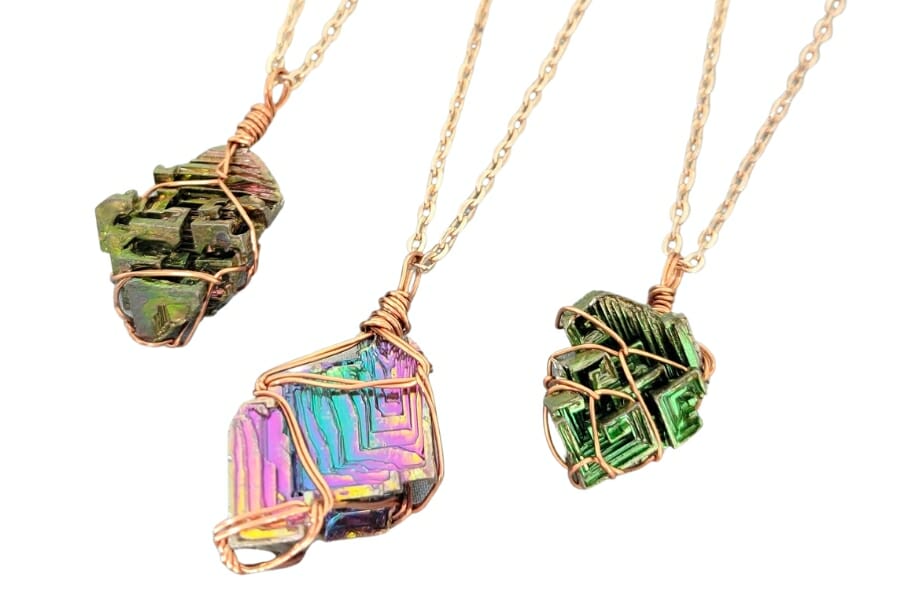Have you ever heard or read about Bismuth? It’s a chemical element that has some pretty cool properties. This little-known metal may not get the same attention as gold or silver, but it definitely holds its own in the value department!
First off, Bismuth has a unique rainbow-colored iridescence that is sure to catch your eye. Not only that— it’s also the most naturally diamagnetic metal, which means it repels magnetic fields. So not only is Bismuth visually stunning, but it’s also magnetic-field-resistant. Pretty impressive, right?
Let’s dive into the details of what else makes Bismuth truly valuable.
What Bismuth Is
Creatively speaking, Bismuth is like the unicorn of the periodic table. It’s not your everyday metal, and it’s definitely not one you’ll find in your kitchen drawer. Bismuth is a chemical element that looks like a metallic candy cane, with its pinkish hue and ridges that twist and turn like a delicious treat.
But don’t be fooled by its sweet appearance, Bismuth is a tough cookie. It has a low melting point, which means it could melt with a lighter and be mold it into whatever shape. Overall, bismuth is a rare and fascinating element, and all these amazing qualities hypes up its value.
There are two most important ores of Bismuth, as follows:
Bismuthinite
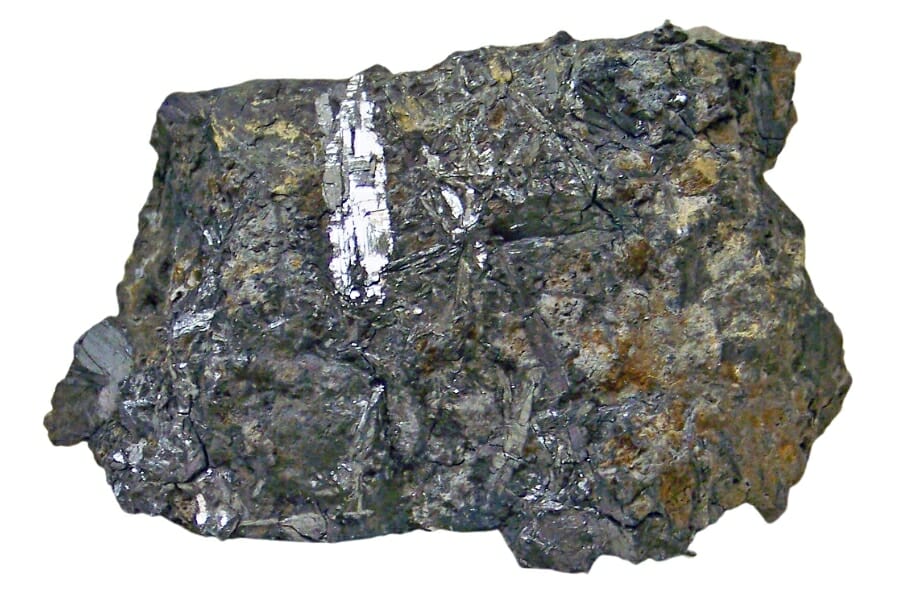
Bismuthinite is a mineral composed of Bismuth, sulfur, and a trace amount of other elements. It’s the most common and important ore of Bismuth. Bismuthinite typically forms in hydrothermal veins and is often associated with other minerals such as quartz, pyrite, and sphalerite.
The value of Bismuthinite lies in its high concentration of Bismuth, which can range from 60% to 80% by weight. Overall, Bismuthinite is a valuable source of Bismuth.
Bismite
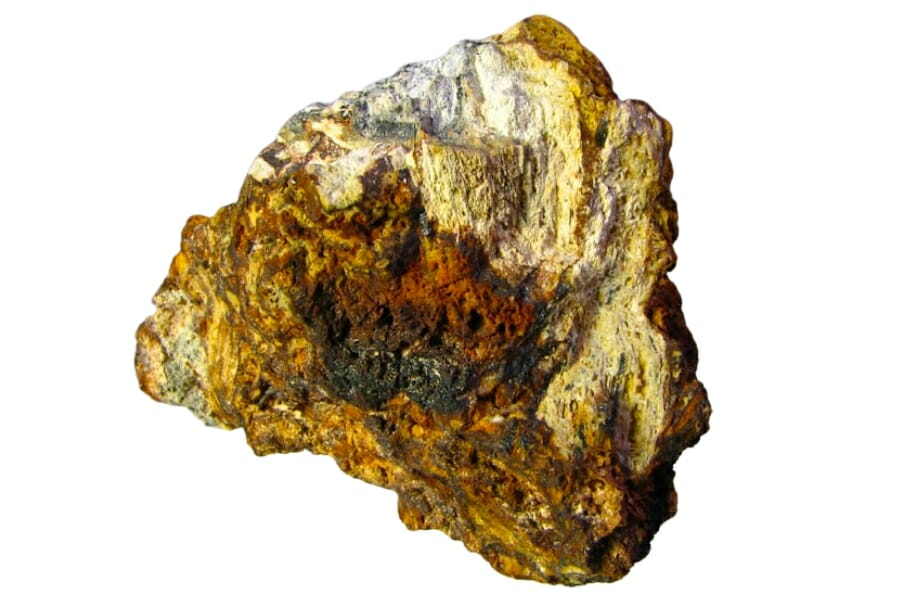
Bismite is a mineral composed of Bismuth, oxygen, and a trace amount of other elements. As one of the primary ores of Bismuth, Bismite is commonly found in hydrothermal veins and can be associated with other minerals such as quartz, pyrite, and arsenopyrite.
Like Bismuthinite, Bismite’s value depends on its high concentration of Bismuth, which can range from 76% to 81% by weight. Because of the versatility and the many industrial uses of Bismuth, its ore Bismite also became an important mineral in modern industry.
Why Bismuth Is So Expensive
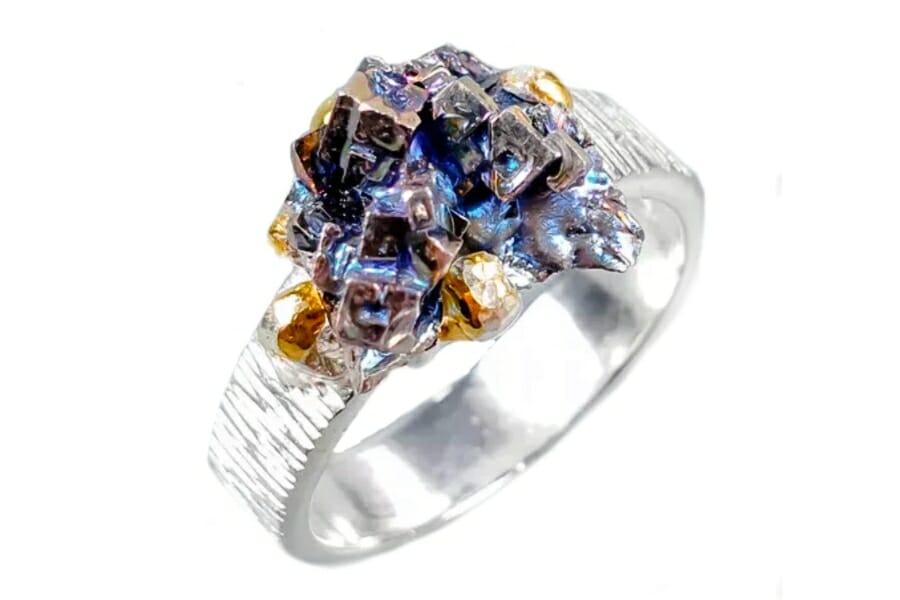
Bismuth may not be the most well-known metal, but it certainly packs a punch when it comes to its value and usefulness. This unique metal has a range of characteristics that make it highly valuable in various industries, which explains why it’s considered one of the most expensive metals on the market.
Firstly, Bismuth has a low toxicity level compared to other metals, making it a popular choice in the pharmaceutical industry. It’s often used in medications to treat stomach ulcers and diarrhea, and it’s also an active ingredient in some antacids. This makes it a valuable metal for the health and wellness industry, and it’s no wonder that Bismuth is in such high demand.
This metal also has a low melting point, which makes it perfect for creating alloys that have low melting points. This makes it ideal for industries such as plumbing and metal casting, where materials need to be easily melted and molded. Bismuth alloys are also commonly used in fire sprinkler systems, where they can melt and trigger the sprinklers at a lower temperature, potentially saving lives and reducing property damage.
But that’s not all: Bismuth is also an excellent conductor of electricity, making it a popular in electronics manufacturing. It’s often used in the production of solder, which is used to join components in electronic devices. Bismuth-based solders have a lower melting point than traditional lead-based solders, which makes them more environmentally friendly and safer to use.
To add to all these qualities that make Bismuth truly valuable in various industries (from health and wellness to electronics and beyond), it’s also a relatively rare metal, which contributes even more to its high cost.
How To Determine The Value Of Bismuth
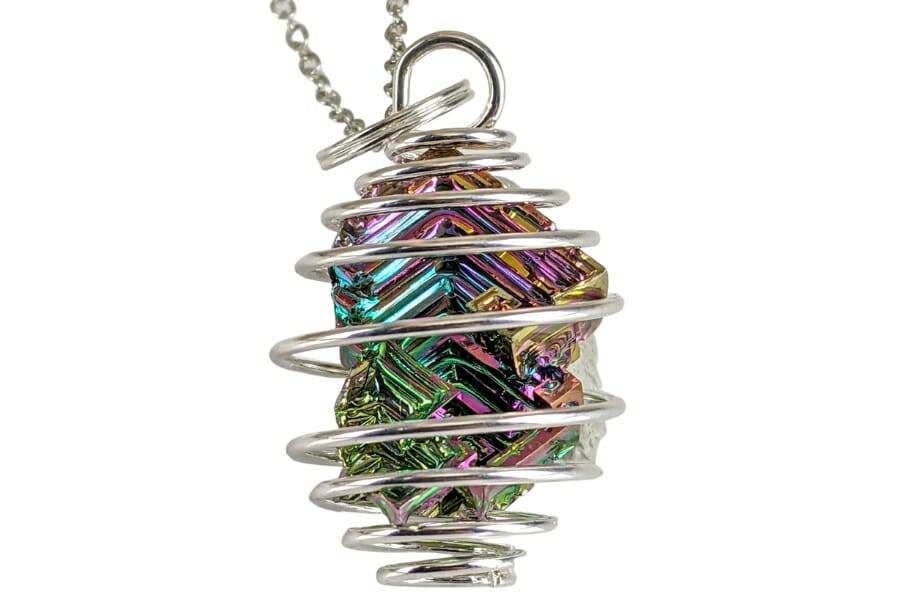
Since Bismuth has unique uses compared to the other crystals and minerals we’ve discussed here, the determinants of Bismuth’s value also vary from them.
Industry
The industry where this metal is being used have a significant impact on Bismuth’s price and value. Since different industries have different demands for it, others may be willing to pay more for it depending on their specific needs.
For example, the pharmaceutical industry may be willing to pay a premium for high-quality Bismuth that meets strict purity standards. This is because it’s used in medications and treatments, and any impurities in the metal could have negative consequences for patients.
Similarly, the electronics industry may be willing to pay more for Bismuth that has specific electrical properties that are required for certain applications.
On the other hand, industries that use Bismuth in lower quantities may be less willing to pay a premium for it. For example, the cosmetics industry uses it in small amounts to create pearlescent effects in makeup products, which means it may be less willing to pay a high price for it.
Market Trends
9f a new industry emerges that requires large quantities of it, this can create a surge in demand and cause the price to increase. On the other hand, if a competing material or alternative to Bismuth becomes more popular, the demand for this metal may decrease and cause the price to drop.
The global economy also affects Bismuth’s value. During times of economic growth, demand for metals like it tends to increase as construction and manufacturing industries expand. In contrast, during economic downturns or recessions, demand for metals may decrease, causing its price to drop.
World Resources and Production
The availability of Bismuth resources and the efficiency of production methods can affect the supply of the metal and, in turn, its price. The largest producer of Bismuth is China, which accounts for over 80% of global production. Changes in Chinese Bismuth production can have a significant impact on the global supply of the metal and the price.
The discovery of new Bismuth resources or the development of more efficient production methods can also affect the price. If new, high-quality Bismuth deposits are found, this can increase the supply of the metal and cause the price to decrease. The same applies vice versa.
Political and economic factors can also affect the production and supply of Bismuth. Trade restrictions or embargoes on this metal’s exports from certain countries can limit its supply and increase the price.
Substitutes
As mentioned under the Market Trends, substitutes can have a significant impact on the price of Bismuth. How? When a substitute material, like some alloys and compounds, that can perform the same functions as Bismuth is developed, this can decrease the demand for this metal and cause its price to drop.
On the other hand, if there are no viable substitutes for Bismuth in a particular application, this can increase the demand for the metal and cause the price to rise. In some cases, manufacturers may be willing to pay a premium for Bismuth due to its unique properties, such as its low toxicity and high density.
The development of new technologies or applications can also affect the demand for Bismuth and, therefore, the price. For example, if a new technology emerges that requires large quantities of this metal, this can increase the demand and cause the price to rise and vice versa.
Bismuth Price
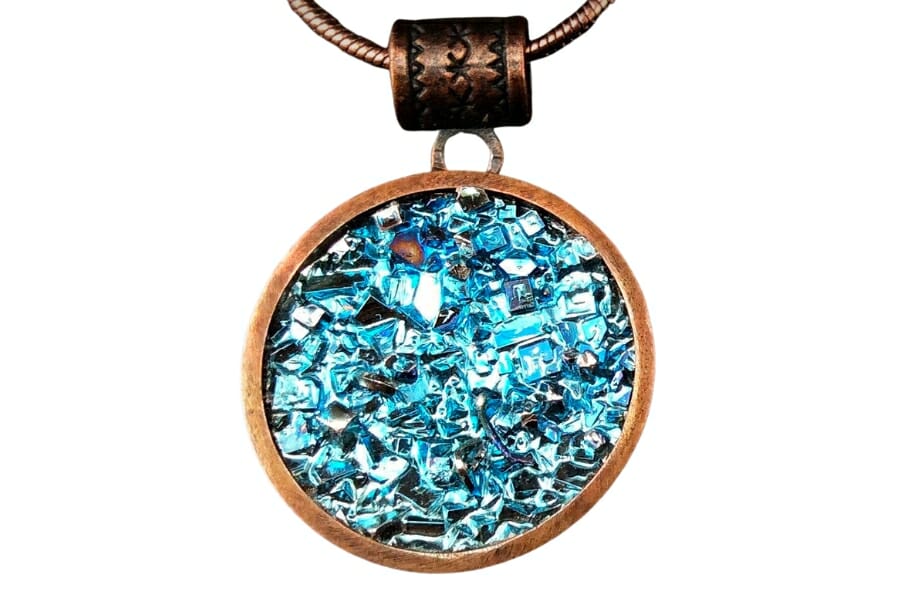
Bismuth’s price is usually computed in pounds. While it’s still considered one of the most expensive metals, its price had a significant downward trend that began in 2014 when its average price is at $11.14 per pound. Today, its price continues to fluctuate between $3 and $14 per pound or $0.0012 to $0.0056 per carat.
To give you a clearer picture of Bismuth’s worth, lets see how expensive it is when you measure it in more common units:
Bismuth pricing by unit of measurement
| Measurement | Price |
| A carat of Bismuth | $0.0012 to $0.0056 |
| A gram of Bismuth | $0.01 to $0.03 |
| An ounce of Bismuth | $0.2 to $1 |
| A kilogram of Bismuth | $6 to 28 |
| A pound of Bismuth | $3 to $14 |
| A ton of Bismuth | $5,443 to $25,401 |
The Most Expensive Bismuth
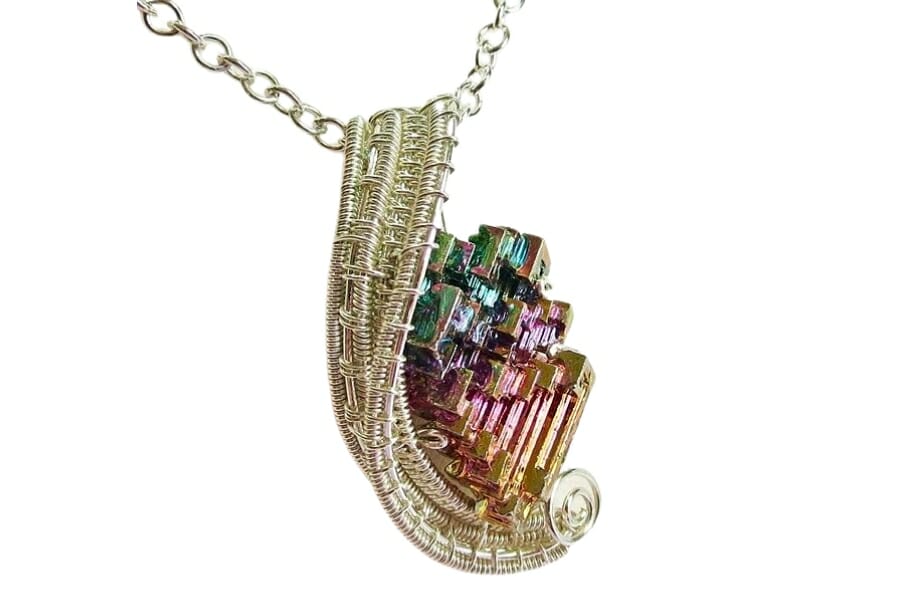
It’s difficult to determine the exact most expensive Bismuth specimen ever sold, as prices can vary depending on factors. However, there are some notable examples of expensive Bismuth specimens that have been sold at auction or through private sales.
One such example is a large Bismuth crystal specimen that was sold by Heritage Auctions in 2019 for $26,290. This specimen measured approximately 17 inches in height and weighed over 70 pounds, and was described as having a unique, iridescent surface due to the crystal’s thin oxide layer.
Another example is a Bismuth specimen sold by Bonhams Auction House in 2011 for £7,500 (approximately $10,000 at the time). This specimen was a rare, dendritic form of Bismuth that featured intricate, tree-like structures of the metal. It was considered a particularly beautiful and valuable specimen.
How To Get An Appraisal On Your Bismuth
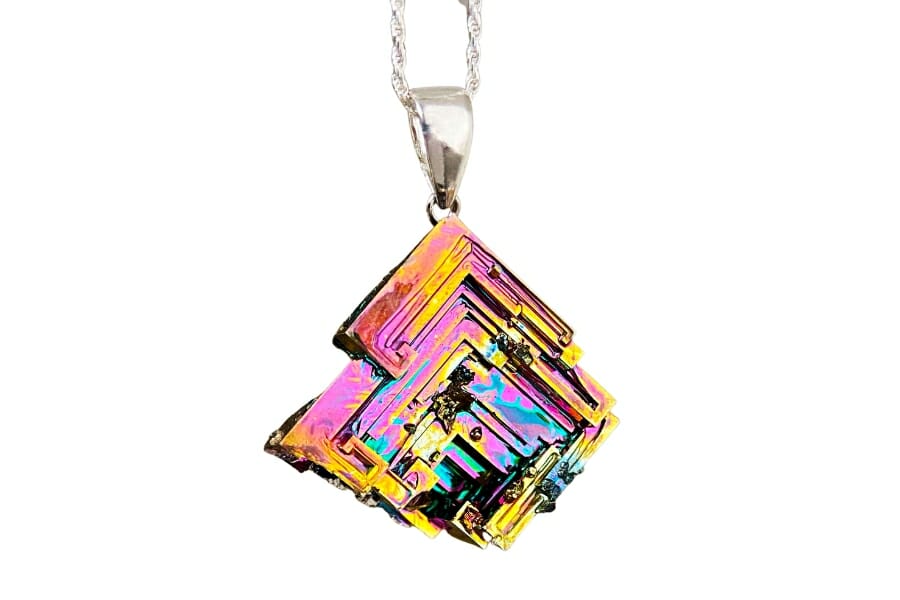
If you’re interested in getting an appraisal on Bismuth, there are a few things you should keep in mind.
First and foremost, it’s important to work with a qualified appraiser who has experience working with mineral specimens and understands the nuances of valuing this metal. Look for an appraiser who is certified or accredited by a reputable organization, such as the American Society of Appraisers or the Gemological Institute of America.
When working with an appraiser, be sure to provide as much information as possible about your Bismuth specimen, including its size, weight, and any unique features or characteristics. If you have any documentation or provenance information, such as a certificate of authenticity or previous appraisal, be sure to share that as well.
Keep in mind that the value of Bismuth can be influenced by a variety of factors. As such, it’s important to have realistic expectations about your Bismuth’s value and to be prepared for the possibility that it may not be worth as much as you had hoped.
Overall, working with a qualified appraiser can help ensure that you get an accurate and fair appraisal of your Bismuth specimen, and can provide you with valuable insights into the world of mineral collecting and valuation.

